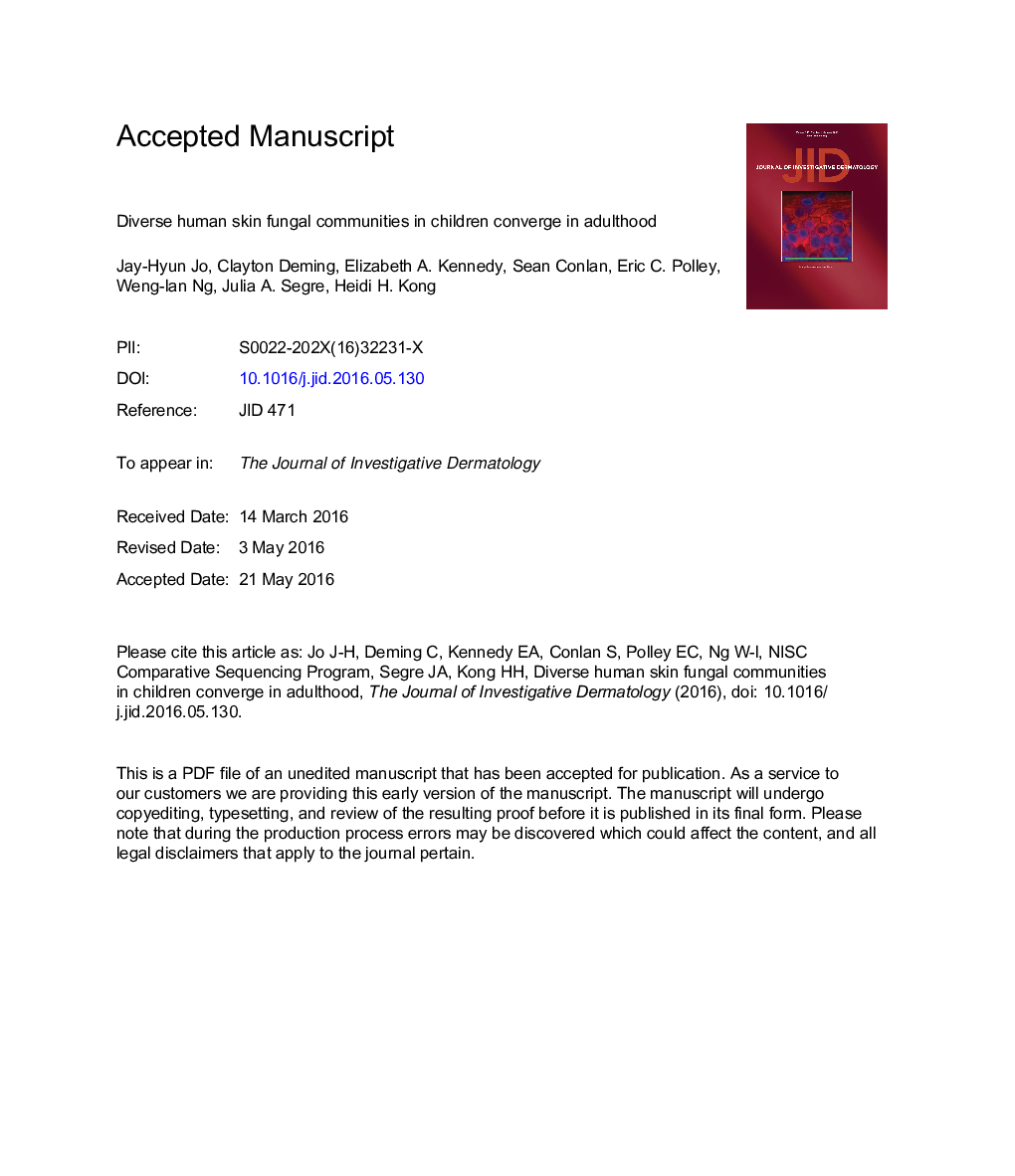| کد مقاله | کد نشریه | سال انتشار | مقاله انگلیسی | نسخه تمام متن |
|---|---|---|---|---|
| 5649457 | 1407125 | 2016 | 29 صفحه PDF | دانلود رایگان |
عنوان انگلیسی مقاله ISI
Diverse Human Skin Fungal Communities in Children Converge in Adulthood
ترجمه فارسی عنوان
جوامع قارچی پوستی مختلف در کودکان در بزرگسالی متمایز می شوند
دانلود مقاله + سفارش ترجمه
دانلود مقاله ISI انگلیسی
رایگان برای ایرانیان
کلمات کلیدی
موضوعات مرتبط
علوم پزشکی و سلامت
پزشکی و دندانپزشکی
امراض پوستی
چکیده انگلیسی
Understanding the skin mycobiome (fungal communities) is important because both commensal and pathogenic fungi can drive cutaneous disease depending on host status and body sites, including the scalp, feet, and groin. Interestingly, age may also affect skin fungal infections as certain dermatophytoses (i.e., tinea capitis) are more frequent in children than adults. We previously described the skin mycobiomes in healthy adults, showing lipophilic fungi Malassezia predominate in most skin sites. Because children have less sebaceous skin before puberty, we compared the fungal communities of primary clinical samples from healthy children and adults, based on sequencing of a fungal phylogenetic marker. Although Malassezia predominated on the trunk, head, and arm skin of adults (age 18-39), children (age < 14) had more diverse fungal communities, for example, Eurotiomycetes, which includes common dermatophytes. Species-level classification showed that Malassezia globosa predominated in children. Collectively, our findings indicate that prepubertal skin is colonized by diverse fungi, whereas adult skin is predominantly obligatory lipophilic Malassezia, suggesting that fungal communities on skin profoundly shift during puberty. Mycobiome shifts during puberty are likely due to alterations in sebaceous gland activation and sebum composition. This study provides a foundational framework for studies investigating interactions between fungi, skin, and pediatric dermatophytosis.
ناشر
Database: Elsevier - ScienceDirect (ساینس دایرکت)
Journal: Journal of Investigative Dermatology - Volume 136, Issue 12, December 2016, Pages 2356-2363
Journal: Journal of Investigative Dermatology - Volume 136, Issue 12, December 2016, Pages 2356-2363
نویسندگان
Jay-Hyun Jo, Clay Deming, Elizabeth A. Kennedy, Sean Conlan, Eric C. Polley, Weng-Ian Ng, NISC Comparative Sequencing Program NISC Comparative Sequencing Program, Julia A. Segre, Heidi H. Kong,
